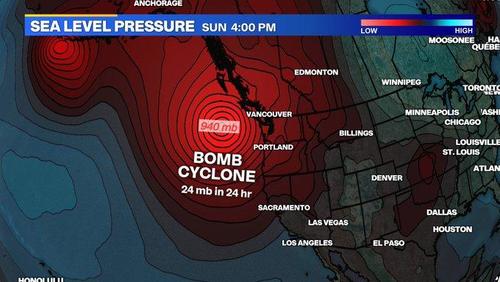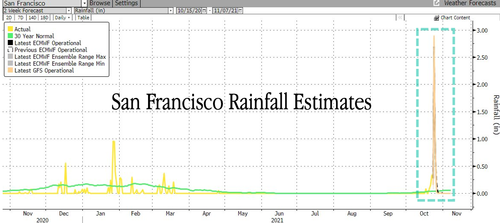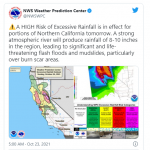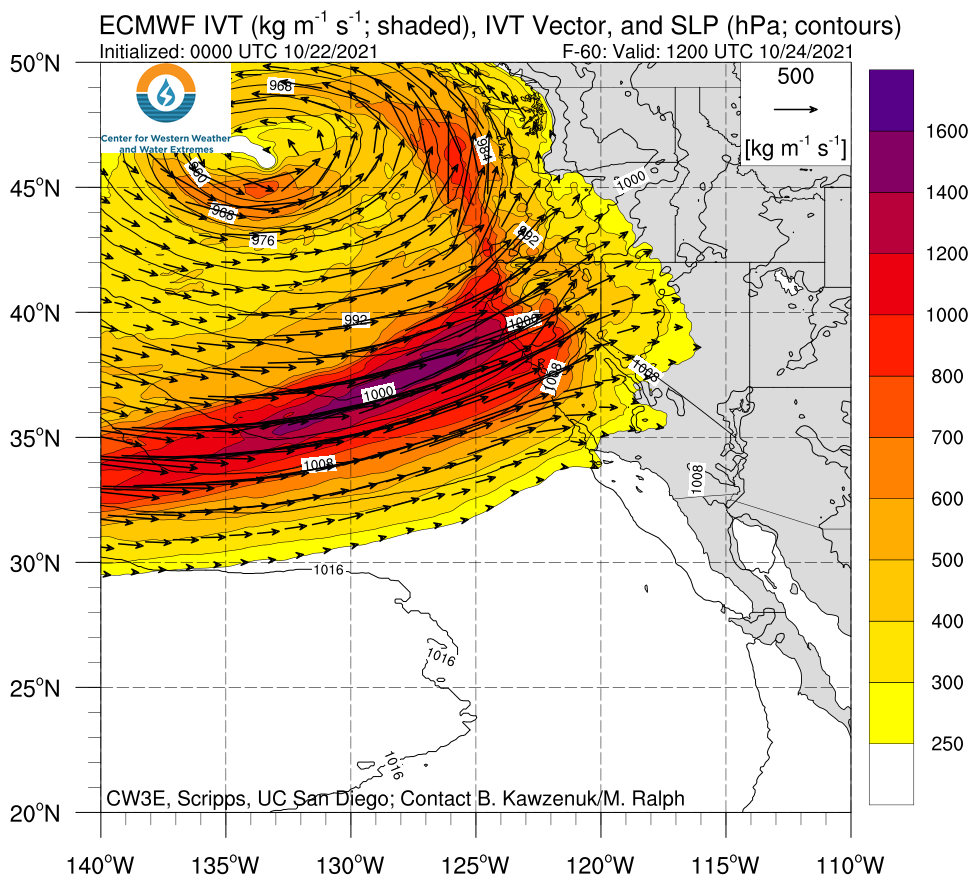Just buttoned up the backyard for the storm. I was gifted 2 bales of straw for winter mulch and now it is all safely tucked under tarps for the interim. The strom gusts of wind don't bother me. Being on the Delta, we get them all year.
My favorite weather site for CA trends.
Water! Falling from the sky! https://twitter.com/jeffbeamish/status/1451612482204700680?s=20 In Northern California, it has been a good old rainy week. Many spots have seen a couple inches or more; nearly everywhere has seen at least enough for some modest puddles. In some areas, the amount
weatherwest.com
Strong atmospheric river to bring fire season-ending and drought-mitigating heavy rain to NorCal, but also high risk of burn area flooding/debris flows
Water! Falling from the sky!
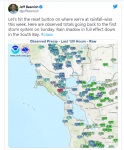
In Northern California, it has been a good old rainy week. Many spots have seen a couple inches or more; nearly everywhere has seen at least enough for some modest puddles. In some areas, the amount of rain that has already fallen is probably enough to greatly attenuate or end fire season. This recent precipitation means that autumn 2021 is already progressing quite differently than recent bone-dry autumns–and this is a most welcomed change for most folks who have endured seemingly unending fire seasons in recent years. It’s also reassuring, in the midst of what was recently measured as California’s
most intense drought on record by some metrics, to see water falling from the sky…with a high confidence forecast of more on the way.
Very strong, warm atmospheric river to affect California on Sunday
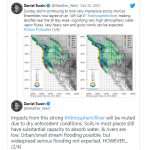
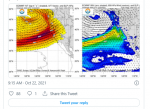
I’ll cut right to the chase: one of the strongest October storms in some years (perhaps a decade or more in some NorCal locations) will likely occur on Sunday.
This moisture delivery system will be in the form of a strong atmospheric river.
In fact, according to the recently-developed AR-Cat scoring system, the Sunday event will likely be an “AR-Cat 5” event. That’s the highest possible rating, although atmospheric rivers can potentially be much stronger still and well above the top end of the scale. Professionally, I do have some concerns that the present AR rating system doesn’t do a great job of actually signifying potential impacts (especially in a warming climate), but suffice it to say: this will be an impressive AR for any time of year, let alone this early in the season (i.e., October).
Stormy conditions are expected to begin early Sunday and ramp up through the day in NorCal. Strong warm advection ahead of a robust cold front, plus the entrainment of some subtropical moisture in the AR plume, will yield a rather warm airmass–raising snow levels to well above pass level in the Sierra Nevada. In fact, rain may fall as high as 10,000 feet during the first half (and most intense) portion of the storm before crashing later in the event. A surface low offshore and to the northwest of CA, combined with a respectable jet streak over NorCal, will lead to very efficient orographic and frontal lifting during the peak of the event Sunday evening. As a result, widespread moderate orographic precipitation (locally heavy) will turn into a widespread heavy rain event for a period later on Sunday as the cold front and AR core approaches. Very intense rainfall rates of 1/2 to 1 inch per hour will be possible for a couple of hours around frontal passage just about everywhere, and for quite a few consecutive hours in the orographically favored areas.

The weekend storm will bring very heavy rainfall to a broad swath of Northern California, especially the northern/central Sierra Nevada and northern Coast Range.
Strong and gusty winds (perhaps to 40-50 mph or so in some places), and maybe some isolated thunderstorms, will likely accompany the cold front–although widespread damaging winds are not expected with this event. I would expect peak rainfall rates around the time of cold frontal passage to be high enough to cause some urban/small stream flooding in parts of NorCal, although widespread significant flooding is not expected due to very dry antecedent conditions in most places. Prior to this week’s rain, soils were at/near record dryness levels and rivers were also at/near record low levels–so there will still be a lot of capacity for the ground to absorb a lot of this water (which is why river flooding is not expected anywhere, despite very intense rainfall). Some parts of NorCal that have seen 3-5+ inches of rainfall this week may see somewhat faster rises on rivers than elsewhere, and perhaps an increased likelihood of small stream flooding, but in general the flood risk with this event will primarily be on small/flashy watersheds and in urban settings. Flash Flood Watches have already been issued by various NWS offices in NorCal for a broad swath of the state, although most of these are primarily intended to target the recent wildfire burn areas (which are, decidedly, numerous and extensive).
The very wettest places in NorCal, especially the western slopes of the Northern Sierra near the Feather River watershed, could locally see 10-13 inches of rainfall by Monday morning (!). Parts of the SF North Bay could easily see 5-7 inches, and much of NorCal will see at least 1-2 inches. That is very impressive indeed for a single storm in October! SLO and SB counties could see a solid 1-2 inch soaking, but most of Southern California will see much less precipitation (<1 inch nearly everywhere) than NorCal. Still, some rain will likely still fall at least as far south as Los Angeles–moderating, but likely not ending, fire season across SoCal.
Snow levels will eventually drop and bring substantial snowfall to the Sierra Nevada at/below pass level, but a majority of the liquid equivalent will likely first fall as rain before the colder air arrives. Still, I’d expect a respectable late October snowpack above 6-7k feet following this event.
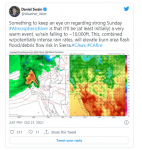 Significant flood/debris flow risk in recent NorCal wildfire burn areas
Significant flood/debris flow risk in recent NorCal wildfire burn areas
A major exception to the “relatively low flood risk” mentioned above will be near wildfire burn areas. While I’d mostly expect this storm to be net beneficial (in terms of drought/fire season mitigation), very heavy rainfall is likely on steep slopes in intensely burned portions of Dixie, Caldor, other recent fire footprints.
Concern has rapidly escalated that portions of the Hwy 50 and Hwy 70 corridor, in particular, could be severely affected by some combination of flash flooding, debris flows, and mudslides during the Sunday storm. There could potentially be substantial damage to transportation and utility infrastructure in the most intensely burned portions of recent (i.e. 2021, but perhaps also 2020) fire footprints, as well as risk to towns immediately within or downstream from these areas.

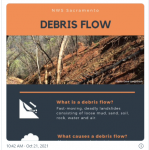
Why am I especially concerned about post-fire hydrologic hazards with this event? First, the very most intense precipitation will occur precisely where the largest and most intensely burned fire footprints exist along the western slopes of the Sierra Nevada. Hourly rainfall *rates* will also be quite high near the peak of the event, perhaps 1 inch/hr or even locally a bit higher. Second, the most intense portion of this atmospheric will be quite warm, with snow levels around 10,000 feet. This means that some higher elevation portions of the burn areas that might more typically see snow at this time of year will see rain instead, with substantial runoff. Thirdly, the Dixie and Caldor Fire footprints in particular encompass some very steep terrain that has been historically prone to slope instability even in the absence of fire activity. All this is to say: if you live within or near a 2020 (or especially 2021) fire footprint in northern or central CA, please be aware of the possibility of major debris flows that could be dangerous and/or disrupt transportation for an extended period. Risks are highest for the most recent (i.e., 2021) fire zones, but could locally extend into some of the 2020 footprints as well (which could includes parts of the SF North Bay, Santa Cruz Mountains, etc.).
Although this storm will be much weaker in SoCal, a brief period of moderate to heavy rainfall may occur over the steep ocean-facing slopes of the Transverse Ranges and there will be some risk of debris flows within the very recent Alisal Fire footprint in SB County as well–possibly affecting Hwy 101 at some point on Monday.
Substantial drying trend beginning next week, though occasionally unsettled conditions could continue
I won’t spend much time on the long range outlook this time, but conditions do look to dry out considerably heading into the end of October and early November. There may be a couple opportunities for more typical autumn-like showers, but otherwise, things look…pleasantly unremarkable following this weekend’s heavy rains. At this point, I am reasonably optimistic I won’t be talking about fire risk in NorCal for the rest of the season, and in SoCal for at least a couple of weeks…


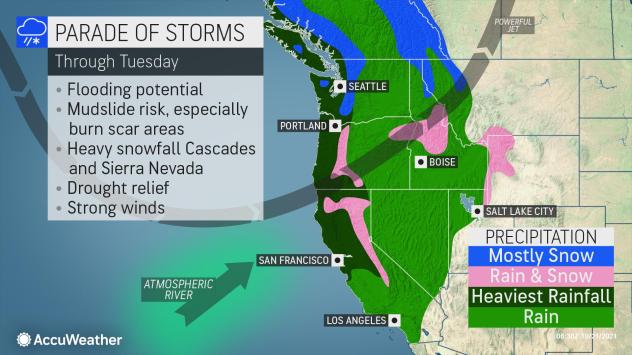

 ryoc.us
ryoc.us

